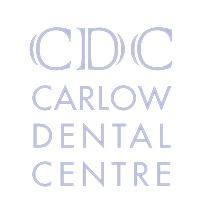CROWNS & VENEERS
Veneers, which are typically made from a thin layer of porcelain shell, cover the outer surface of a tooth. Veneers, with their translucent, light-reflecting quality, complement your natural teeth, making them a natural choice for restoring and replacing unsightly teeth.
A crown is a tooth-shaped covering that completely encases the tooth’s visible part. Crowns are used for a variety of reasons
VENEERS
Veneers can transform your smile in a cost effective way, giving you a straighter whiter smile.
Our professional dentists here are CDC offer a complete treatment solution in as little as two visits. As an alternative to crowns, Veneers don’t require much preparation. Only a thin layer of tooth enamel will need to be removed to make room for the veneer.
CROWNS
A dental crown may be needed in the following situations:
CROWNS
A dental crown may be needed in the following situations:
CROWN INFORMATION
A crown is a tooth-shaped cap that is placed over a tooth. It is used to strengthen and protect your tooth structure. Most crowns are made of a hard, white substance to help them look natural.
Preparing a tooth for a crown usually requires two visits to the dentist – the first step involves examining and preparing the tooth, the second visit involves placement of the permanent crown.
First visit: Examining and preparing the tooth
At the first visit in preparation for a crown, your dentist the conditions of your tooth involved. If the tooth has extensive decay or if there is a risk of infection or injury to the tooth’s pulp, a root canal treatment may first be performed.
Before the process of making a crown begins, your dentist will anesthetize (numb) the tooth and the gum tissue around the tooth. Next, the tooth receiving the crown is filed down along the chewing surface and sides to make room for the crown. The amount removed depends on the type of crown used. If, on the other hand, a large area of the tooth is missing (due to decay or damage), your dentist will use filling material to “build up” the tooth to support the crown.
After reshaping the tooth, your dentist will make an impression or take a scan of the tooth to receive the crown. Impressions or scans of the teeth above and below the tooth to receive the dental crown will also be made to make sure that the crown will not affect your bite.
The impressions are sent to a dental lab where the crown will be manufactured. The crown is usually returned to your dentist’s office in two to three weeks. If the crown is made of porcelain, your dentist will also select the shade that most closely matches the colour of the neighbouring teeth. During this first visit your dentist will make a temporary crown to cover and protect the prepared tooth while the crown is being made. Temporary crowns usually are made of acrylic and are held in place using temporary cement.
Second visit: Receiving the permanent dental crown
At the second visit, your dentist will remove the temporary crown and check the fit and colour of the permanent crown. If everything is acceptable, a local anaesthetic will be used to numb the tooth and the new crown is permanently cemented in place. When the procedure is over, you will receive further care instructions.
On average, dental crowns last between five and 15 years. The life span of a crown depends on the amount of “wear and tear” the crown is exposed to, how well you follow good oral hygiene practices, and your personal mouth-related habits (you should avoid such habits as grinding or clenching your teeth, chewing ice, biting fingernails, and using your teeth to open packaging).
While a crowned tooth does not require any special care, remember that simply because a tooth is crowned does not mean the tooth is protected from decay or gum disease. Therefore, continue to follow good oral hygiene practices, including brushing your teeth at least twice a day, flossing daily — especially around the crown area where the gum meets the tooth — and rinsing with an antibacterial mouthwash at least once a day.










